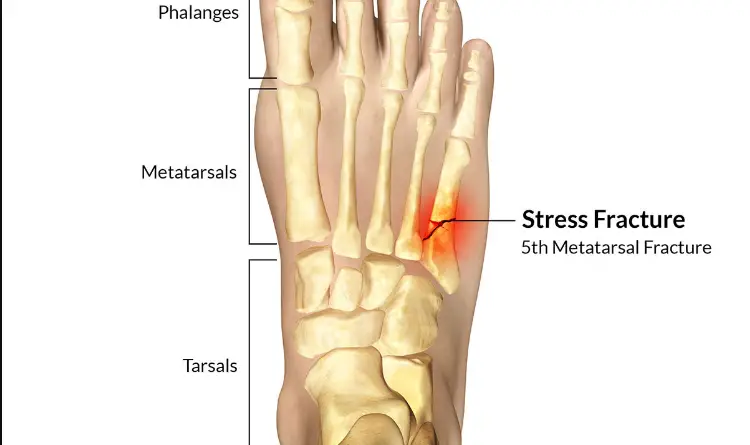What Does a Stress Fracture in The Foot Feel Like
Foot stress fractures are tiny fractures or cracks in bones. As the name suggests, foot stress fractures are caused by overburdening stress, typically occurring during sports and exercise. The condition is common amongst sportsmen and athletes; however, women are particularly prone to develop these hairline fractures, especially active teenage girls.
Foot stress fractures are linked to a trinity of causes termed the female athlete triad. Irregular menstruation, osteoporosis, and poor nutrition cause a weakening of bones, which can make stress fractures increasingly likely to occur. The problem is exacerbated because of the pressure on young girls to keep body weight down, which typically leads to a reduction in foods which are deemed to be high in fat, such as milk and dairy products. Since these products are the body’s main source of calcium, deficiencies can easily occur, which weakens the bones.
There are 26 bones in each foot, each of which has to cope with the full weight of the body, making the feet the most common location for stress fractures. Foot stress fractures most frequently occur in the calcaneus – heel bone, the fibula – the main bone of the lower leg, and the navicular – a bone at the peak of the foot.
When a sportsman, dancer or any other vigorously active person puts the feet under regular prolonged stress, the muscles can become easily fatigued, even in fit, active and healthy individuals. As the muscles tire, they lose their ability to cope with the shocks. Fatigued muscles cannot effectively deal with the weight of the body, and the bones are required to cope with the extra forces. Over time, the bones in the feet can develop numerous tiny cracks which can lead to more serious fractures developing, and even a full break when the bones become weak.
Foot Stress Fracture Causes?
- Sudden increase the quantity of exercise/training/sports
- Increases in the duration of exercise
- Putting in extra effort and force in any sporting activity
- Diseases which make the bones weak, such as osteoporosis
- As the body ages, the muscles get weaker and are less able to deal with shocks causing the bones to be placed under greater stress
How Do Foot Stress Fractures Occur?
When a sportsperson is injured and is out of the game for some time, it is natural that they train extra hard to get fit again and to get back on the turf as soon as possible. This overexertion when the body is not actually ready can cause stress fractures to develop.
Improper sports shoes and especially exercise footwear which is not regularly replaced can cause significant damage to the muscles and bones. Shoes which do not have adequate cushioning, such as old sneakers, place a greater strain on the bones and muscles. For runners and joggers, replacing running shoes at least every six months is recommended, and more frequently for people who run many miles on a daily basis.
Even with professional players, sometimes their technique can become flawed, with the sportsperson only realizing it after the damage has been done. If you feel that your muscles are being stretched unusually and you feel strain while doing a particular exercise, you should analyze your technique and consult a professional trainer if needed.
It is not necessary just sporting activities which can cause foot stress fractures, with the injuries able to be caused by a single traumatic event, such as a fall or a heavy landing. Diseases such as osteoporosis which make the bones weaker make developing stress fractures far more likely.
Preventing Foot Stress Fractures
Keeping following tips in mind to help prevent foot stress fractures from developing. Prevention, after all, is the best cure!
- Wear proper footwear – A must if you want to practice your sporting activity safely
- Increments in exercise should be gradual, to allow the body time to become conditioned
- You can take extra precaution by adopting a calcium and vitamin D rich diet to encourage healthy and strong bones.
- If your body feels under strain and heel pain is experienced, stop exercising at once and take it easy for a few days to give the body time to recover.
Image Source: ePainAssist
What Does a Stress Fracture in The Foot Feel Like, Last Updated: 16/1/2018


